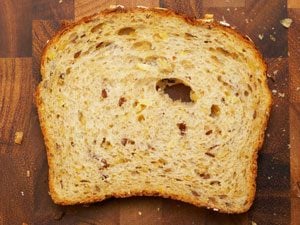Why You Should Avoid White Flour
Updated: Apr. 06, 2020
© Jupiterimages/Photos.com/Thinkstock Have you ever noticed that some wheat breads are as smooth as white bread, while others have crunchy

Have you ever noticed that some wheat breads are as smooth as white bread, while others have crunchy kernels in them? Those kernels take a long time for your body to break down. So do any whole, intact grains, such as wheat berries (small kernels of wheat, which are delicious in salads).
Modern commercial flour, on the other hand — especially white flour — has been stripped of the parts of the wheat kernel that slow its digestion; it’s extremely easy for the body to turn white flour into blood sugar. That’s why it’s best to choose whole grains that are still intact, and foods such as beans, lentils, and wheat berries instead of those made from white flour.
Until the 19th century, the main way to turn grain into flour was to grind it between stones, sometimes powered by a water wheel. Making very fine flour took a lot of work, and it was available only in small amounts to the rich. Then high-speed, high-steel rollers, which make very fine flour quickly and inexpensively, were invented, almost instantly transforming our diets into blood-sugar nightmares.
Modern manufacturing also turns grains into highly processed forms such as cornflakes or puffed corn snacks. These foods tend to have higher Glycemic Loads (GL) than ones where the grains are left intact, like popcorn, or those milled in an old-fashioned manner, like the coarse, stone-ground whole-wheat flour used to make rustic whole-grain bread.